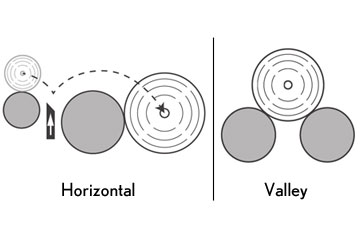

March 5 2020

In earlier blog posts, we compared center winders to surface winders and explained the fundamental differences between these two winding methods. In this article, we will focus on surface winding and compare two distinct surface winder configurations and the strengths and weaknesses of each type.
By definition, surface winding is a method of converting web-based materials into cylindrical rolls in which the force required to rotate the winding package is provided entirely by direct contact with one or more driven rollers. The orientation of the winding package to the driven roll or rollers and how the contact (or nip) force is applied is what categorizes the two different surface winder types. Nip loading is essential to ensure adequate traction between the winding roll and the driven roller. If the winding package is cradled by two driven rollers that support the full weight of the roll, we describe this type of machine as a valley, or two-drum surface winder (think of the valley formed between two mountain peaks). When wider materials wind on small diameter cores, this full-width support prevents excessive winding shaft deflection, which can be a real benefit when slitting and winding multiple rolls on the same shaft.
We know that starting with a firm wind provides a solid foundation, and an inner roll structure that’s required to support additional layers of material as the roll builds. Studies have shown that applying increased nip loading to a roll as it winds causes a tightening effect to the roll that is in addition to the tightening effect caused by incoming web tension alone. Often, a decrease in roll firmness as the diameter increases is required to prevent internal stresses from reaching levels that could damage the material within the roll. This increased nip loading and increase in roll density, not desirable when processing certain web materials, is challenging to avoid on a valley winder. Very often, finished roll sizes are limited due to this propensity for applying higher nip loads and to reduce the potential for generating nip-induced defects, like core crushing, crepe wrinkling, or permanent bulk reduction. Winding materials that are sensitive to these defects requires a different type of surface winder - one in which the nip loading is independent of roll weight.
The alternative to a valley winder is the horizontal surface winder. This type of surface winder, also known as a single drum winder, nips the winding roll against the side of a driven roller. The term horizontal describes how the centerline of the winding roll travels horizontally, rather than in a vertical direction. The winding core or mandrel is supported only at its ends by a sliding carriage or chucks, rather than by the winding drum itself. Thus, increases in the winding roll's weight does not contribute to additional nip loading against the driven roller. These machines can wind huge and heavy rolls, yet can deliver much lower nip loading while doing so and can control roll density more precisely than a valley winder. Due to the way the winding roll is supported in the machine, maximum finished roll weight is limited by the weight carrying capacity of the winding shaft itself. In general, horizontal winders that process wide webs require larger diameter cores and mandrels to adequately support the finished roll weight without exceeding deflection or stress limitations of the winding shaft. A valley winder, in comparison, by nature of its full support of the winding roll as it builds in size, can process very wide materials on small diameter winding shafts, provided the material can withstand the added nip loading.
These two fundamental types of surface winders have their own sets of benefits and limitations, depending on the products to be processed. Both winder types are available as offline, manual style machines or as fully automatic primary winders at the end of a continuous process. With all of these configurations and options, deciding which type will fit your application can be a challenge. However, we're here to help. Please fill out the form below, and one of our winding experts will contact you.